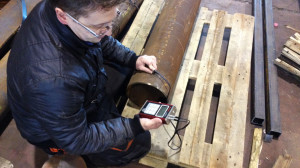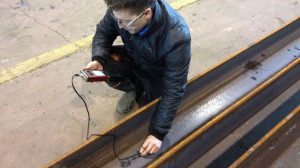Ultrasounds are elastic waves (or mechanical vibrations ) which spread in the materials with a stated velocity depending on material characteristics and on kind of wave used. As well as the light, ultrasonic waves may undergo reflections, refractions, diffractions , diffusions in the passage from a means to another one.
Just these features , in conjunction with known speed of propagation and the angle of incidence of the ultrasound beam , allow the identification of discontinuities within the pieces examined, their location and depth. This method of investigation , that is volumetric, permits the control of high thicknesses in less time and cost than the industrial radiography though it is less reliable for the inspection of low thicknesses . The most used techniques are the a-scan control that involves checking with traditional oscillogram, phased array , in which you can electronically set the parameters of the ultrasonic beam , TOFD which exploits the phenomenon of the wave diffraction for the detection of flaws.
 The thickness measurements represent a particular application of the more general ultrasonic method. The time between the emission of the pulse and its reception by the probe, given a propagation speed and a known angle (0 °) allows to know the thickness of the piece with centesimal precision .
The thickness measurements represent a particular application of the more general ultrasonic method. The time between the emission of the pulse and its reception by the probe, given a propagation speed and a known angle (0 °) allows to know the thickness of the piece with centesimal precision .

